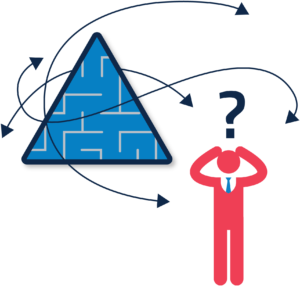Why ‘Bigger is Better’ Pricing Isn’t Better
Why ‘Bigger is Better’ Pricing Isn’t Better
Have you seen the commercials on TV where a group of young children are interviewed by a man about what is better? The kids are asked if they would rather play basketball in a big fancy stadium or a small driveway. Naturally, the kids say they would rather play in the stadium because bigger is better.

Often times in business the thinking is the same. Bigger is better. But should this really apply to our approach on how we design our product offerings and how we price those offerings? Consider the situation where a distributor of healthcare products offers a bundle of services to help their customers market their products. The bundle contains 10 different components that are all designed to assist the customer move more product through their location. The problem for the distributor is that this bundle of services is selling slowly and the distributor believes that the bundle is lacking value.
To remedy the situation, the distributor adds more components to the offering in an attempt to boost the value. Now we have a bigger and better offering that would certainly entice customers to buy. Right? Not necessarily.
In this real world situation the distributor added more benefits to the offering but failed to understand the differences among its customers. Not all customers are created equal. That is, different customers have different needs and require different solutions. Of course, we are talking about segmenting the marketplace but also segmenting our pricing by differentiating our product offerings.
Product Versioning
The answer for this distributor was not to add more components to a single bundled package but to divide the package into separate offerings or versions. Different versions are designed to appeal to different market segments and allow us the opportunity to set different prices. Prices that are targeted for different segments and will allow us to sell more and capture more margin. It also allows us to compete more effectively when the competitor offers a single solution.
All too often we see businesses trying to compete in a complex market with a single offering that tends to get bigger over time as they try to be all things to all customers. This usually drives the price down to the lowest level in order to appeal to all segments and leaves money on the table. Or, if higher prices are set, sales are lost to the lower end of the market. We see automakers remedy this situation with a wide range of offerings across a range of price points each designed to appeal to a market segment at a price point.
Bigger may be better when selecting a venue to play basketball but smaller may be better when designing product offerings and price points. Are you trying to do too much with your single offering?
